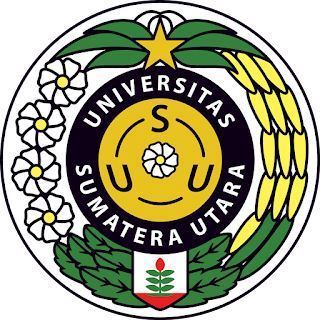PENDUGAAN POTENSI KARBON HUTAN DENGAN SISTEM PENGINDRAAN JAUH
Abstract
The relationship between remote sensing and biomass is that remote sensing is one of the best approaches for regional biomass estimation when forest stand data in the field are difficult to obtain. One used images satellite estimate forest carbon and biomass is the Landsat 8 OLI (Operational Land Imager) image with resolution of 30 meters. Study estimate potential tree carbon stored forest by using remote sensing system using Landsat 8 OLI satellite imagery. Regression analysis of actual biomass calculation using allometric equations developed lowland heterogeneous tropical forests with vegetation index NDVI (Normalized Difference Vegetation Index) and ARVI (Atmospherically Resistant Vegetation Index). Determination best of model by calculating the lowest standard error of estimation of each regression model by calculating carbon 50% from above-ground biomass. Estimation carbon potential in study area using linear regression model on the transformation the ARVI vegetation index (Y = 443.24 ln(X) + 576.93). The amount of biomass that The highest forest in the study area is 225.37 Ton/ha with the highest carbon potential of 112.69 Tons/ha. The forest carbon potential value obtained is classified into 5 classes using the Natural Breaks (Jenks) method facilitate at process estimating forest carbon potential so knowing distribution carbon of forest.
Downloads
References
Basuki, T. M., van Laake, P. E., Skidmore, A. K., & Hussin, Y. A. 2009. Allometric Equations for Estimating The Above-Ground Biomass In Tropical Lowland Dipterocarp Forests. Forest Ecology and Management, 257(8), 1684–1694. https://doi.org/10.1016/j.foreco.2009.01.027
Brown, S., Sathaye, J., Cannell, M., & Kauppi, P. E. 1996. Management Actions: Mitigation of Carbon Emissions to the Atmosphere by Forest Management. Commonwealth Forestry Review, 75(1), 80–88.
Hardianto A, Dewi PU, Feriansyah T, Sari NFS & Salsabila Rifiana NS. 2021. Pemanfaatan Citra Landsat 8 Dalam Mengidentifikasi Nilai Indeks Kerapatan Vegetasi (NDVI) Tahun 2013 dan 2019 (Area Studi: Kota Bandar Lampung). Jurnal Geosains dan Remote Sensing (JGRS), 2 (1), 8-15.
Kaufman, Y., & Tanre, D. 1992. Atmospherically Resistant Vegetation Index (ARVI) for EOS-MODIS. IEEE Transactions on Geoscience and Remote Sensing, 30 (2), 261-270.
Lu, D. 2006. The Potential and Challenge of Remote Sensing-Based Biomass Estimation. International Journal of Remote Sensing, 27(7), 1297–1328. https://doi.org/10.1080/01431160500486732
Rouse, J., Haas, R., Schell J., & Deering D. 1973. Monitoring Vegetation Systems in the Great Plains with ERTS. Third ERTS Symposium, NASA. pp 309-317.
USGS. 2014. Using the USGS Landsat 8 Product. http://landsat.usgs.gov/Landsat8_Using_Product.php. [Agustus 2021]
Wijaya ADR, Hani'ah H & Bashit N. 2019. Studi Perbandingan Metode ARVI, EVI 2 dan NDVI Untuk Penentuan Kerapatan Tajuk Dalam Identifikasi Lahan Kritis Di Kabupaten Boyolali (Studi Kasus: Kecamatan Ampel, Kecamatan Cepogo, Kecamatan Selo dan Kecamatan Musuk Kabupaten Boyolali). Jurnal Geodesi Undip, 8 (1), 358-367.













